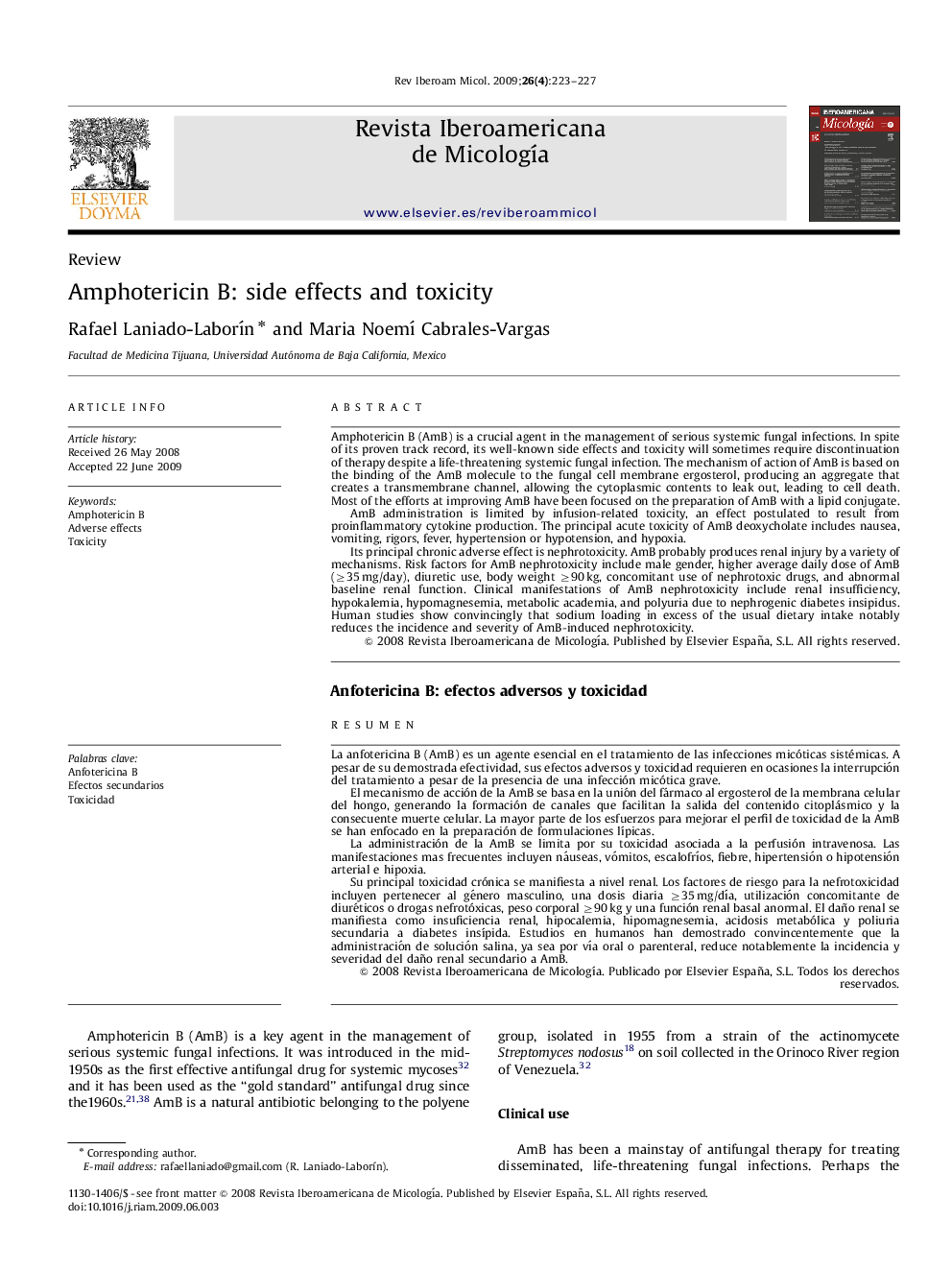| کد مقاله | کد نشریه | سال انتشار | مقاله انگلیسی | نسخه تمام متن |
|---|---|---|---|---|
| 3419088 | 1225799 | 2009 | 5 صفحه PDF | دانلود رایگان |

Amphotericin B (AmB) is a crucial agent in the management of serious systemic fungal infections. In spite of its proven track record, its well-known side effects and toxicity will sometimes require discontinuation of therapy despite a life-threatening systemic fungal infection. The mechanism of action of AmB is based on the binding of the AmB molecule to the fungal cell membrane ergosterol, producing an aggregate that creates a transmembrane channel, allowing the cytoplasmic contents to leak out, leading to cell death. Most of the efforts at improving AmB have been focused on the preparation of AmB with a lipid conjugate.AmB administration is limited by infusion-related toxicity, an effect postulated to result from proinflammatory cytokine production. The principal acute toxicity of AmB deoxycholate includes nausea, vomiting, rigors, fever, hypertension or hypotension, and hypoxia.Its principal chronic adverse effect is nephrotoxicity. AmB probably produces renal injury by a variety of mechanisms. Risk factors for AmB nephrotoxicity include male gender, higher average daily dose of AmB (≥35 mg/day), diuretic use, body weight ≥90 kg, concomitant use of nephrotoxic drugs, and abnormal baseline renal function. Clinical manifestations of AmB nephrotoxicity include renal insufficiency, hypokalemia, hypomagnesemia, metabolic academia, and polyuria due to nephrogenic diabetes insipidus. Human studies show convincingly that sodium loading in excess of the usual dietary intake notably reduces the incidence and severity of AmB-induced nephrotoxicity.
ResumenLa anfotericina B (AmB) es un agente esencial en el tratamiento de las infecciones micóticas sistémicas. A pesar de su demostrada efectividad, sus efectos adversos y toxicidad requieren en ocasiones la interrupción del tratamiento a pesar de la presencia de una infección micótica grave.El mecanismo de acción de la AmB se basa en la unión del fármaco al ergosterol de la membrana celular del hongo, generando la formación de canales que facilitan la salida del contenido citoplásmico y la consecuente muerte celular. La mayor parte de los esfuerzos para mejorar el perfil de toxicidad de la AmB se han enfocado en la preparación de formulaciones lípicas.La administración de la AmB se limita por su toxicidad asociada a la perfusión intravenosa. Las manifestaciones mas frecuentes incluyen náuseas, vómitos, escalofríos, fiebre, hipertensión o hipotensión arterial e hipoxia.Su principal toxicidad crónica se manifiesta a nivel renal. Los factores de riesgo para la nefrotoxicidad incluyen pertenecer al género masculino, una dosis diaria ≥35 mg/día, utilización concomitante de diuréticos o drogas nefrotóxicas, peso corporal ≥90 kg y una función renal basal anormal. El daño renal se manifiesta como insuficiencia renal, hipocalemia, hipomagnesemia, acidosis metabólica y poliuria secundaria a diabetes insípida. Estudios en humanos han demostrado convincentemente que la administración de solución salina, ya sea por vía oral o parenteral, reduce notablemente la incidencia y severidad del daño renal secundario a AmB.
Journal: Revista Iberoamericana de Micología - Volume 26, Issue 4, October–December 2009, Pages 223–227